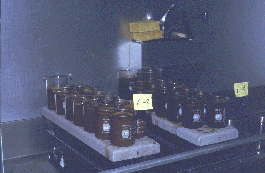![]()
ANT 211
Fundamentals of Forensic Anthropology
Role of the Forensic Anthropologist in the Forensic Sciences
(page 6 of 7)
B. Forensic Anthropologists:
1. Help establish identity, analyze trauma (manner of death), estimate time since death based on extent of decomposition and taphonomic processes (study of environmental factors affecting decay).
2. Perform osteological examinations and analyses--dealing mostly with the hard tissues, the bones
osteological analyses are best done on dry bone. However, not all human remains are in this "skeletonized" condition. The condition of the body may vary greatly:
fresh
decomposed (various stages)
mummified (dry conditions)
burned (with flesh or without, as a result of brush, forest, or house fire)
drowned (or thrown into a body of water, where decomposition began)
skeletonzied (only the bones, with or without very little soft tissue/hair/skin remaining)
Each of the above conditions may exist for a whole body, a dismembered body (either around the time of death, or pulled apart by predators after death), or multiple bodies together (known as "commingled").
Remains that are not mostly skeletonized are macerated. Maceration is the heating of body parts in water, in stainless steel pots on burners under an odor hood, for purposes of softening the tissues for easy manual removal to expose the bone to be examined.

Maceration of individual vertebral bones
Maceration involves (1) heating and softening tissues and (2) manually scraping off the tissues to expose bone.
Examination of bones reveals information on: age at death, sex, ancestry, and trauma (before death, around the time of death, and any damage incurred after death)